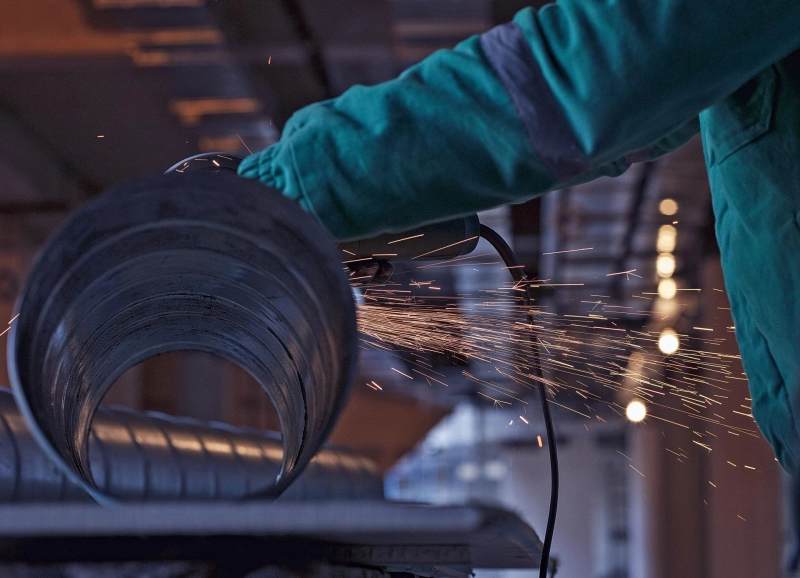The Ferro Alloy Industry is undergoing a remarkable transformation, driven by technological advancements, changing market demands, and evolving environmental regulations. As steel production continues to grow globally, the need for high-quality ferro alloys remains a crucial factor for various industrial applications. Industry leaders are exploring innovative solutions to meet the challenges of efficiency, sustainability, and market competitiveness. The pace of change is accelerating, and those keeping a close watch on emerging trends can position themselves for long-term success.
1. Sustainability and Green Production Methods
One of the most significant shifts is the growing focus on eco-friendly manufacturing processes. Governments and industry bodies are introducing stricter emission norms, pushing producers toward sustainable practices. Companies are investing in low-carbon production technologies, renewable energy integration, and waste heat recovery systems. Efforts are being made to recycle slag and other by-products, turning waste into valuable raw materials. This move toward greener operations is not only a compliance measure but also a strategic advantage in attracting environmentally conscious customers.
2. Digitalization and Industry 4.0 in Ferro Alloy Production
The adoption of Industry 4.0 technologies is revolutionizing the ferro alloy manufacturing process. Smart sensors, AI-powered monitoring systems, and predictive maintenance tools are enabling companies to optimize furnace operations, reduce downtime, and improve quality control. Real-time data analytics offers better insight into production efficiency, energy consumption, and raw material utilization. By integrating automation and digital solutions, manufacturers can achieve higher productivity and consistency, leading to improved profitability.
3. Shift Toward Specialty Alloys
While traditional ferro alloys such as ferro manganese, ferro chrome, and ferro silicon remain in high demand, there is an increasing market for specialty alloys designed for specific industrial applications. High-strength, corrosion-resistant, and lightweight alloy variants are gaining traction, particularly in aerospace, automotive, and renewable energy sectors. This shift requires enhanced R&D capabilities, collaboration with end-users, and a deeper focus on metallurgical innovations to meet unique performance requirements.
4. Global Supply Chain Diversification
The Ferro Alloy Industry has faced disruptions due to geopolitical tensions, trade restrictions, and logistical challenges. To minimize dependency on a single source or region, companies are diversifying their supply chains. Strategic sourcing from multiple countries, investment in local production facilities, and the establishment of robust distribution networks are becoming essential. Such measures not only reduce risks but also improve the resilience and responsiveness of supply chains in volatile markets.
5. Rising Demand from Emerging Economies
Rapid industrialization in regions such as Southeast Asia, Africa, and Latin America is contributing to a growing demand for ferro alloys. Infrastructure development, urbanization, and increased steel consumption are creating significant opportunities for producers. Market players are exploring joint ventures, local partnerships, and export agreements to tap into these expanding economies. Establishing a strong presence in these regions can provide a competitive edge and open new revenue streams.
6. Focus on Energy Efficiency
Energy is one of the largest cost components in ferro alloy production. Manufacturers are prioritizing energy-efficient smelting techniques, advanced furnace designs, and process optimization strategies to lower operational expenses. Energy audits, automation, and renewable energy sourcing are playing a pivotal role in reducing both costs and carbon footprints. Companies that successfully balance cost efficiency with environmental responsibility are likely to gain a stronger market position.
7. Technological Innovations in Smelting Processes
Continuous improvements in smelting technologies are enabling higher yields, reduced impurities, and better control over alloy composition. Plasma smelting, submersible arc furnaces, and hybrid electric smelters are some innovations enhancing production capabilities. These advancements also help in processing lower-grade ores more efficiently, thereby maximizing resource utilization and reducing waste.
8. Integration of Recycling in Raw Material Sourcing
Recycling of steel scrap and other alloy-bearing materials is emerging as a vital trend. The circular economy approach not only reduces the dependency on mined ores but also aligns with sustainability goals. Many producers are investing in dedicated recycling plants to recover valuable metals and alloys, creating a more cost-effective and environmentally friendly supply chain.
9. Strategic Collaborations and Mergers
The competitive landscape of the Ferro Alloy Industry is witnessing increased collaboration among producers, steel manufacturers, and technology providers. Strategic mergers, acquisitions, and partnerships are helping companies expand their production capabilities, access new markets, and share technological expertise. Such alliances can accelerate innovation and provide economies of scale in both production and distribution.
10. Government Policies and Trade Regulations
Policy changes, import-export tariffs, and environmental regulations play a decisive role in shaping the market. Producers must stay informed about regulatory developments in both domestic and international markets to ensure compliance and adapt business strategies accordingly. Proactive engagement with policymakers and industry associations can also help in shaping favorable trade environments and securing long-term growth.
The Role of Sarojini Group in the Changing Industry Landscape
Sarojini Group has been at the forefront of adapting to these emerging trends, ensuring that its operations remain efficient, sustainable, and future-ready. By integrating modern technologies, emphasizing quality, and exploring innovative production methods, the company has positioned itself as a reliable partner in the global ferro alloy market. With a commitment to sustainability, robust supply chain management, and strong customer relationships, Sarojini Group continues to deliver exceptional value to clients across various industries.
Looking Ahead
The future of the Ferro Alloy Industry will be defined by those who can balance innovation, sustainability, and adaptability. Market demands are evolving, and the ability to anticipate changes, adopt new technologies, and forge strategic partnerships will be key to long-term success. Industry players who embrace these trends will not only strengthen their competitive position but also contribute to a more resilient and sustainable industrial ecosystem.



